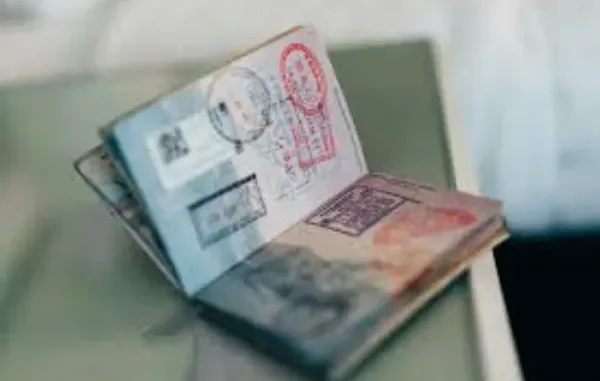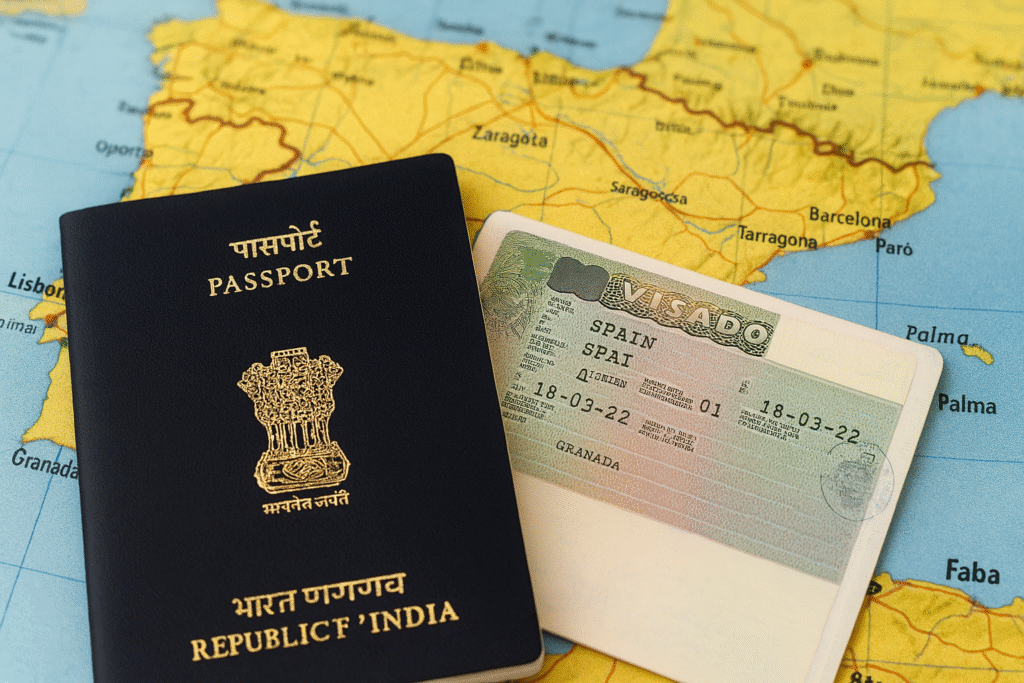

Spain – a land of sun-kissed plazas, flamenco music, and golden coasts – has long called to travelers from all over the world. It is a land where history speaks from medieval castles and where modern culture thrives in its cosmopolitan cities, such as Madrid and Barcelona. It is the place where you will wander the narrow streets of Seville, smell the orange blossom, or experience firsthand the architectural creations of Gaudí, and so much more. Spain is a place that invites you to experience it with your senses and reveal your soul in the process!
But before you can experience that, you must navigate through the Spanish visa process. Although brief, understanding the Spain Visa as a barrier to entry is quite important. Understanding the Spain Visa process is an important first step, and this small step is your key into the tapestry of art, food, festivals, and geography that Spain has to offer. The Spanish visa process is well thought out and organized. Once you understand how it all works, you will find the Spain visa process simple and manageable, which will open the door for you to delightful travel in one of Europe’s spectacular countries!
Understanding the Spanish visa
Spain is part of the Schengen Area, meaning that travelers from countries outside the European Union (EU) and European Economic Area (EEA) typically need a Spain Visa to enter. The kind of visa needed will depend on the purpose of the visit and the duration of stay. The main categories are:
- Short-Stay Visa (Schengen Visa – Type C): which is appropriate for visiting purposes such as tourism, business, or family visits for up to 90 days in 180 days.
- Long-Stay Visa (National Visa – Type D): which is for any stay exceeding 90 days. This could be for studying, working, or reuniting with family members.
- Transit Visa: which is used by travelers just passing through a Spanish airport, connecting to another destination.
It is important to choose the correct category because each has its own requirements and eligibility criteria. Applying for the correct visa category will also allow for a smooth experience.
Step-by-Step Guide to the Application Process
There are multiple steps to apply for a Spanish visa, and each step is to help verify your qualifications and purpose of travel. Here is an outline of the process:
Identify Visa Type:
The first step is to figure out the purpose of the visit — tourism, study, business, or work — which helps you know which documents you’ll have to submit and where to apply.
Schedule an Appointment:
You need to go online to the official site of the Spanish consulate or to the authorized visa application center in your country to schedule the appointment. A visa application has to be scheduled, so schedule the appointment as early as possible, especially if you are traveling during a busy travel time.
Fill out the Application Form:
The application form for the Schengen Visa is available online. Complete the form accurately and check to be sure that personal and travel details match what is on your passport and supporting documents.
Place some emphasis on the Required Documents:
The following are the typical documents you will need:
- A valid passport (at least two blank pages, and validity beyond your travel date)
- Recent passport-sized photographs
- Proof of accommodation (hotel reservation or invitation letter)
- Itinerary of travel and return flight reservations
- Proof of sufficient financial means
- Travel medical insurance (minimum coverage of €30,000)
- Visa fee payment confirmation
Attend the Visa Interview:
On the appointment day, you’ll need to appear in person for biometric data collection (fingerprints and photo) and to submit your documents. Answer any questions truthfully and confidently.
Track Your Application:
After submission, you can track your visa status online using the reference number provided. Processing times generally range from 10 to 15 working days, though it can vary depending on the consulate and time of year.
Tips for a Smooth Application
To help you facilitate your Spain Visa journey, here are some suggestions:
- Start Early: To be safe, initiate the process 4–6 weeks before departure, just in case there are unexpected delays.
- Review Your Paperwork: Filling out all needed paperwork improperly or not submitting the proper documents leads to delays and often visa rejections.
- Be Honest: Indicate all actual details and don’t submit fraudulent documents. Consulates are serious about the verifiability of your application and honesty is very important.
- Make Copies: You should always have electronic and paper copies of all your documents and submission confirmations.
- Budget Accordingly: Your bank statements and proof of funds must reasonably indicate that you can afford to travel to the destination and be back home.
Common Reasons for Visa Rejection
Even if the majority of applications are accepted, some applicants may be denied for the following reasons:
- Documentation was not complete, or signatures were lacking.
- Financial resources could not be proven.
- The purpose of travel is unclear, or ties to the home country are weak.
- Travel insurance does not meet the requirements.
If your visa application is denied, do not panic. You may either reapply after addressing the reasons for the denial or appeal the decision within the time frame given.
Life After Receiving the Visa
If your visa application is approved, the next step is to prepare for your trip. Spain has much to offer with a unique mixture of history, food, and modern flair. These are just some suggestions for popular destinations:
- Madrid is Spain’s central city, and it is home to the Prado Museum, the Royal Palace, and the Gran Vía.
- Barcelona is a beautiful city where you will find art and architecture everywhere you look. Some of the most famous sites include Sagrada Família and Parc Güell.
- Seville is known for flamenco, gothic cathedrals, and the beautiful Alcázar Palace.
- Granada is home to the astonishing Alhambra, which is a must-see for anyone who appreciates history and architecture.
- Valencia is a great balance of modern and futurism with their architecture in addition to their Mediterranean beaches.
Each destination will offer the traveler a different perspective of Spanish life from the Royal past to the vibrant present.
Final Thoughts
Visiting Spain is more than a vacation; it is a thorough introduction to centuries of culture, color, and creativity. Although the visa application may feel formal upon first glance, it is intended to guarantee that travelers can explore the country in a safe and responsible fashion. If you can take the time to become familiar with each requirement, your trip will be less stressful and therefore more pleasurable.
In my own experience planning travel, I can attest that following proper guidance can make all the difference. Websites such as OneVasco will facilitate your visa application by allowing you to stay organized and knowledgeable. First-time travelers or 10th-time travelers to Europe should realize that the more you understand the process, the more confident and excited you will be to travel.
Spain awaits you, a country of passion, art, and timeless beauty. Once your visa is obtained, you are ready to find its cadence, savor its taste, and embrace a culture that revels in living life wholeheartedly at every turn.

Leave a Reply